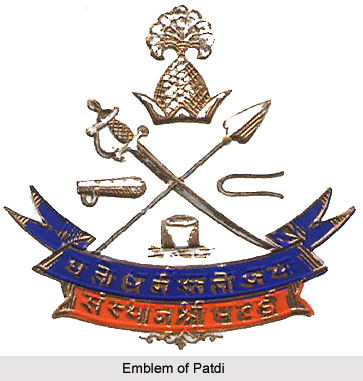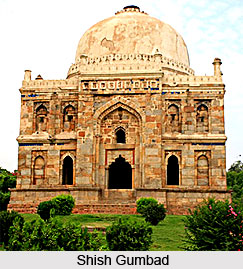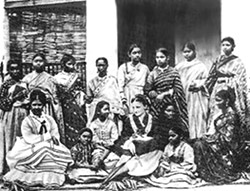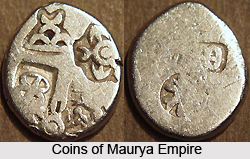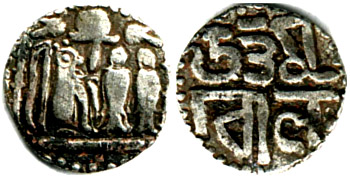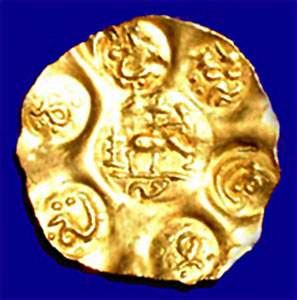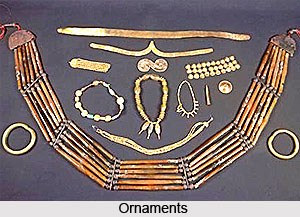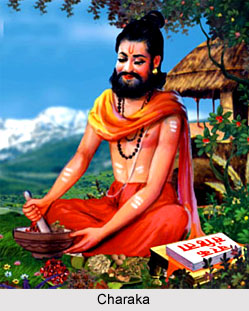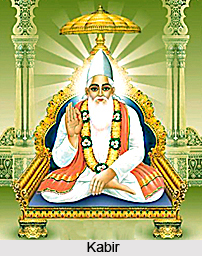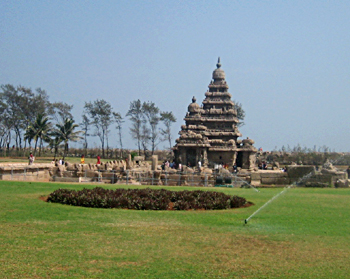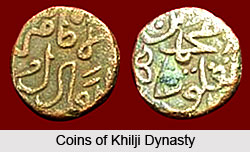 Sepoy Mutiny in Punjab was spread across a wide area. After Delhi, Rohilkhand, Central India, Meerut, Rajputana, Kanpur, Lucknow and Allahabad had risen in tumultuous revolt, people were now awaiting the latent state of Punjab to rise. None of the above-mentioned states were under the complete grip of the British force. And Lord Canning was as expected, troubled about the fact. Insurrections and violence was the order of the day everywhere. Sir John Lawrence was the man, the Lord was looking forward to, in times of distress. He devised out a well-laid plan about how to nab the native rebels. Sir John was aware of the fact that if the Delhi rebellion were to be attacked with full vigour, they were bound to taken by surprise. Punjab was close to Delhi, and it was standing in imminent danger of insurgency. Hence, Sir John impressed this idea of his on General Anson, and desired for troops to be despatched in right earnest. Since he was the sole inventor of his plan, it solely depended upon him to do things straight and rightly.
Sepoy Mutiny in Punjab was spread across a wide area. After Delhi, Rohilkhand, Central India, Meerut, Rajputana, Kanpur, Lucknow and Allahabad had risen in tumultuous revolt, people were now awaiting the latent state of Punjab to rise. None of the above-mentioned states were under the complete grip of the British force. And Lord Canning was as expected, troubled about the fact. Insurrections and violence was the order of the day everywhere. Sir John Lawrence was the man, the Lord was looking forward to, in times of distress. He devised out a well-laid plan about how to nab the native rebels. Sir John was aware of the fact that if the Delhi rebellion were to be attacked with full vigour, they were bound to taken by surprise. Punjab was close to Delhi, and it was standing in imminent danger of insurgency. Hence, Sir John impressed this idea of his on General Anson, and desired for troops to be despatched in right earnest. Since he was the sole inventor of his plan, it solely depended upon him to do things straight and rightly.
To do this job, required the possession of moral courage owned by few. The position of Sir John Lawrence in Punjab was unique. But eight years had elapsed since the fighting classes of that province had contested its possession with the British, on the fields of Chilianwala and Gujarat. Never had the English encountered a foe so determined, so daring, and, despite the unskilfulness of their commanders, so hard to defeat. The English had conquered and had annexed the province. Now, only eight years later, Sir John Lawrence would have to call upon the same fighting classes to aid him in resisting the pretensions of the sipahis (soldiers).
It was, indeed, a unique position. Sir John Lawrence had to consider whether he could afford to risk the departure from the province of some of the English regiments which were there for its protection. The consideration was necessary in order to enable him to despatch to the force besieging Delhi the assistance without which, that city could not be taken. He had to recollect that he, too, was constrained by a large garrison of sipahis pervaded with the leavening of mutiny. He would have to deal with these also. It would be incumbent upon him to repose a trust almost absolute in the Sikhs. In a word, he would have to risk everything to ensure the success of that march against Delhi, of which he had been the relentless advocate.
A brave man, morally as well as physically, Sir John Lawrence even courted the ordeal. From the very first he devoted all his energies to the employment of the resources of Punjab in the subduing of Delhi. One of his first acts was to despatch there the magnificent Guide corps. The corps was composed entirely of frontier men, and consisting of cavalry and infantry. That corps quitted the frontier on 13th May, and joined the force before Delhi, the day after Barnard had made good his position on the ridge. His lieutenants at Peshawar (presemtly in Pakistan) were Herbert Edwards, Neville Chamberlain, and John Nicholson. They had, together with General Reed, commanding the division, and Sydney Cotton, commanding the brigade, jotted down the heads of a plan for the formation of a moveable column. This scheme was approved by Lawrence, and acted upon rather later.
Meanwhile, his lieutenant at Lahore, Robert Montgomery, had taken the wise precaution of disarming the sipahis at Mian Mir (May 13th). The general at Peshawar carried out a similar policy on the 22nd. By the enlistment of old Sikhs as gunners, and by the timely securing of crucial places, Sir John made the province, as secure as, under the circumstances, it could be made. This was to be the base of his operations for the upcoming days.
That some outbreaks should take place was, in the agitated state of the minds of the sipahis, but natural.
The first indication of actual outbreak on the part of the sipahis occurred at Mardan, when the 55th N. I., who had replaced the Guide corps at that station, rose in rebellion. Rather than surrendering their arms, they rushed off towards the hills of Swat. Nicholson pursued them with a few trusty horsemen. He caught them on their way. He killed 120 of them in fair fight, made 150 prisoners, and forced the remainder to take refuge in the Lund-khur hills. On 7th June, the native regiments stationed at Jalandhar rose in revolt, and swept on to Ludhiana, on their way to Delhi. An energetic member of the Civil Service, George Ricketts, together with Lieutenant Williams of the Indian army, made a most determined and gallant effort to prevent the passage by them of the Sutlej River. But the recruits at their disposal were few, and some of these tumbled in their hands. After a tussle of two hours` duration, the rebels had their way. Williams was shot through the lungs. The rebels, on reaching Ludhiana, roused the population to revolt, released the prisoners, and pushed on to Delhi. The British troops at Jalandhar pursued them. But, they were with so little energy that, alike at the passage of the Sutlej and at Ludhiana, they were always too late.
Meanwhile, Sir John Lawrence had gradually realised that, he had been over-confident in predicting the immediate fall of Delhi on the appearance before it of the British troops. As day succeeded day, the force of the rebels was intensified by the arrival of the mutinied regiments. While that of the besiegers decreased by casualties. Sir John`s outlook assumed very serious proportions then. Still more than ever, he adhered to his resolution at all costs to pierce the heart of the enemy`s position. He had had enough experience of the Sikhs not to know that their fidelity depended upon success. It would be dangerous to prolong indefinitely a situation which already was becoming critical. Impressed with these views, he wrote, to Edwardes on 9th June, suggesting the wise ness, under certain circumstances, of renouncing the British hold on Peshawar. He also wrote to withdraw the British forces across the Indus River. Edwardes, Nicholson, and Sydney Cotton replied (June 11) by a joint protest against such a scheme. Eight days later Edwardes repeated his objections, supporting them with weighty arguments.
But Sir John would not give way. He regarded Delhi as the decisive point of the scene of action. He argued that the importance of holding Peshawar must relent to the greater necessity of recapturing Delhi. So impressed had he been, of the idea of making the sacrifice, that he, on June 10th, wrote to Lord Canning for permission to carry his plans into effect should the necessity arise.
On 25th June he believed that the necessity had almost arisen, and he wired to Edwardes, detailing the bad news that had arrived. He also added that if matters should get worse, it would be his decided opinion that Peshawar arrangement should take effect. Edwardes, Cotton and Nicholson strongly protested against this. The question was set at rest some weeks later by the receipt from Lord Canning of a telegram containing the words: `Hold on to Pashawar (Peshawar) to the last.
Before that telegram had arrived events had occurred to show that the position was becoming more and more serious. On the morning of 7th July, the 14th Regiment N. I. mutinied by the Jhelum River. Taking a strong position, the mutineers rebuffed two attacks made upon it by the English troops. That night the sipahis (soldiers) evacuated their position and fled. But the affair was managed in a manner which reflected but little credit on the authorities.
The day following, the native troops at Sialkot followed the example of their brethren at Jhelum. The station had been denudated of European troops for the formation of the moveable column. The native regiments were the 46th N. I. and the 9th Cavalry. These men, summoned to Delhi by the King, were apparently anxious to reach that place. They had murdered as many of the English race as they could find. The survivors took refuge in an old fort, once the stronghold of a Sikh chief, Tej Singh. Then the mutineers, having pillaged the treasury, having released the prisoners, and affected all the damage they could, start for Delhi.
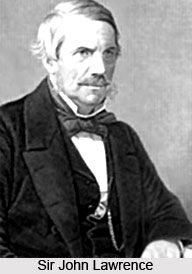 Meanwhile, the moveable column had been formed, and on the 22nd of June John Nicholson, with the rank of Brigadier-General, had assumed command of it. It required no small courage on the part of Sir John Lawrence to take a regimental captain from civil employment, and place him in command over the heads of men his seniors. But the times were critical, and at all costs the best man had to be selected if Delhi was to be recaptured.
Meanwhile, the moveable column had been formed, and on the 22nd of June John Nicholson, with the rank of Brigadier-General, had assumed command of it. It required no small courage on the part of Sir John Lawrence to take a regimental captain from civil employment, and place him in command over the heads of men his seniors. But the times were critical, and at all costs the best man had to be selected if Delhi was to be recaptured.
The force commanded by Nicholson consisted of the 52nd Light Infantry, Dawes`s troop of horse-artillery, Bourchier`s field-battery, the 33rd and 35th N. I., and a wing of the 9th native light cavalry. Nicholson joined the force at Jalandhar, and marched straight to Philaur. Under the walls of the fort of Philaur, he disarmed the two sipahi regiments. Then, he retraced his steps to Amritsar, a central position commanding Lahore, the Jalandhar Duab, and the Manjha. He was there when news reached him of the mutiny at Jhelum. His first step was to disarm the native regiment, the 59th N. I., located at Amritsar. The next day brought him information that the 58th N. I. and two companies of the 14th, the regiment which had fought at Jhelum, had been disarmed. Though, the task was accomplished in a very clumsy manner, at Rawalpindi.
On the 9th of July Nicholson heard of the insurrection at Sialkot. In the insurrection, the left wing of the regiment, the 9th native cavalry, the right wing of which was with him, had taken a very prominent part. He promptly disarmed that wing. Then, learning that the Sialkot mutineers were marching towards Gurdaspur, forty miles distant from him, he resolved to intercept them in the course. Nicholson felt convinced they would take the route via Nurpur and Hoshiarpur, to Jalandhar.
Quitting Amritsar on the 10th, he made a forced march to Gurdaspur. Reaching it in the evening of the 1lth, he found that the rebels were at Nurkot, some fifteen miles from the Ravi River, on its northern side. As they would have to cross that river, Nicholson, commanding the inner line, waited until their movement had been pronounced. Then, learning that they were crossing at Trimmughat, he threw himself upon them. After a contest so severe, it became necessary to try and have a way with the bayonet. He drove them back upon the river, with a loss of between three and four hundred men. Unable, from the intense heat and exertions to which his men had been exposed, to follow them further, he left a party to guard the ghat. Nicholson then returned with the bulk of the brigade to Gurdaspur. The river, meanwhile, had risen, and the rebels, unable to reach the further bank, had taken a position on an island in its centre. By the aid of an old gun they had brought from Sialkot, they hoped to defy all enemies from there. Nicholson, however, was resolved to teach them a lesson.
Nicholson devoted the three following days to the procuring of boats, and watching the rebels carefully during that period. He embarked his infantry, on the morning of the 16th, and landed them at one extremity of the island. He placed his guns towards that edge of the island, so as to cover their advance against the enemy at the further end. The tactics succeeded completely. The rebels were defeated with very profound loss; many were drowned in attempting to escape. The few, who reached the shore, were given up by the villagers.
Nicholson then returned to Lahore, met Sir John Lawrence, and learned that on his way to and beyond the Sutlej his column would be reinforced by 2,500 men. From them, 400 belonged to the 61st foot, 200 to the 8th foot, 100 to the artillery, and the remainder were Sikhs or Baluchistan. On the 24th, he received his orders to march for Delhi. Crossing Beas River on the 25th, and taking up his reinforcements as he marched, Nicholson reached Bara, in Sirhind, on 3rd August. There he received a despatch from General Wilson. The General was commanding the force besieging Delhi. The despatch spoke about the rebels who had established themselves in force on the Najafgarh canal. They had the intention of moving towards Alipur. The General had requested him to push forward with all expedition to drive them off. Nicholson did push on, and reached Ambalah (present day Ambala, Haryana) on the 6th. From there he wrote to Wilson to promise that the column should be at Karnal on the 8th. From there, the column needed to push on to Panipat, where he would rejoin it. In the interim, he hurried on in advance to see Wilson. He stayed in camp a few days. There, he took note of all that was going on. Then returning, Nicholson met his column, and marched into camp at the head of it on 14th of August.



